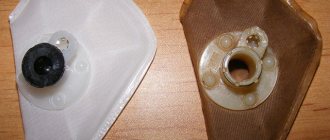Modern cars use two types of transmission of torque from the timing mechanism to the crankshaft. This is a belt and chain design. The second option is more reliable and durable, however, untimely maintenance and repairs can lead to the device operating too noisily. Chain tensioners, which are equipped with all timing kits, allow you to correct the transmission condition.
Purpose
The mechanism in question ensures the normal operation of the chain and the entire drive. The unit is easy to maintain and simple in design. The tension is carried out under the influence of a spring or oil in the working rod of the device. The engine chain tensioner is a fairly reliable element and rarely fails. However, if extraneous noise is heard, it is necessary to check its condition and, if necessary, replace it.
Ignoring this problem leads to the chain weakening and jumping off, which can lead to more serious damage to the power unit. It is quite possible to clean and replace the part on your own. Next, we will consider the features and operating principle of these devices.
011_moto_0811_070
When the front wheel is aligned, look again, but at a less acute angle, so that you can see both sides of the rear.
On the left and right, this angle (it can be clearly seen from the front wheel) should be approximately the same. The photo shows that our rear wheel is facing to the left (in the direction of travel of the motorcycle). When the front wheel is aligned, look again, but at a less acute angle, so that you can see both sides of the rear. On the left and right, this angle (it can be clearly seen from the front wheel) should be approximately the same. The photo shows that our rear wheel is facing to the left (in the direction of travel of the motorcycle).
Mechanical chain tensioner
In this case, the required tension value is achieved using a plunger spring. Under its influence, the working element leaves the landing compartment and comes into contact with a special shoe. The load on it continues until the chain resists. This allows you to prevent it from sagging and fix the desired position using a stopper.
With prolonged use, the chain stretches and requires repeated adjustment. After unscrewing the plunger lock nut, the spring will again adjust the degree of sagging. Such chain tensioners have a significant disadvantage. They are susceptible to clogging with small particles, which increases the likelihood of the plunger jamming. This problem can be solved simply by tapping the element. If the device body is damaged, it must be replaced.
Due to the relatively labor-intensive maintenance of a drive with mechanical chain tension, many car owners are switching to an automatic type, which independently adjusts the chain tension and prevents the device from jamming.
How to tension a chain on a VAZ-2107 without removing the valve covers?
First we need to place the car on a flat surface and secure it with anti-roll bars. Next, fix the gearshift lever in the neutral position. Then remove the drive cover. Once access to the chain is free, the tensioner should be slightly loosened. It is located next to the water pump. Next, using a 36-degree socket, rotate the crankshaft 360 degrees. After this, tighten the tensioner to the maximum. We start the engine and check the tension level. The clatter must disappear.
Automatic design
This type of timing chain tensioner has a ratchet that automatically controls the sagging and stretching of the transmission element. The unit consists of a housing and a spring-loaded pawl located in it, as well as a gear strip. The teeth are made with a slope in one direction in increments of one millimeter.
The operating principle of this design is as follows:
- the spring of the device acts on the toothed bar with force, depending on the sagging of the chain;
- the bar transmits force to the tensioner shoe;
- reverse movement is eliminated thanks to the ratchet locking pawl;
- the stopper falls between the teeth, preventing the bar from moving back.
This principle of operation consists in the constant action of the spring on the bar with tension on the chain, and the ratchet device prevents it from weakening.
Possible malfunctions and their causes
If an increase in noise during operation of the gas distribution unit is clearly noticeable, the chain tensioner of the ZMZ or another engine should be removed and checked. It is located on the right side of the power plant. A similar mechanism works using a spring and oil pressure in the housing, which depends on a similar indicator in the engine itself.
Reasons leading to the appearance of extraneous sounds during operation of the timing chain:
- poor quality purge of the plunger device;
- clogged ventilation holes;
- Excessive plunger wear;
- incorrect spring adjustment;
- failure of the ball valve.
Let's consider the procedure for disassembling and installing this device.
Mechanism characteristics
This element performs the function of adjusting the chain tension in the gas distribution mechanism drive. It is installed on all cars with this drive. The hydraulic chain tensioner compensates for low tension. Over time, the part wears out. When the motor is running, the chain constantly rotates and tends to stretch. It gets to the point where the part jumps one or more teeth. As a result, incorrect gas distribution occurs. As a result, late or early closing of the intake and exhaust valves occurs. Chain stretching is completely normal. Over its lifespan, it can stretch one to two centimeters. The hydraulic chain tensioner smoothes out this stretching.
Replacing the chain tensioner
In order to remove the mechanism, it is necessary to unscrew the plunger fixing bolt. This must be done carefully, since the screw is under great pressure from the spring. Then you need to dismantle the spring-plunger filling. The unloaded length of the spring should be 155.5 millimeters.
The next step is to check the device. To do this, the plunger is shaken, while the ball (working element) must move freely. Then the functionality of the valve is checked. When compressed air is blown in, it should open, and after repeating the manipulation on the other side, it should close. If this does not happen, you need to remove the valve from the mounting sleeve and clean both elements. You also need to pay attention to the cleanliness of the blow-out slot.
How does it work?
The principle of operation of the element is based on the operation of a spring. As oil from the line flows through the valve body, the plunger presses against the plastic tension shoe. Some engines use a lever with an asterisk. Thus, continuous contact of the surface of the working element is ensured. When engine speed changes, the element plunger moves back. The spring is compressed.
Damping of vibrations occurs due to the flow of lubricant through the plunger and body. The oil pressure is controlled by the hydraulic tensioner ball valve. When the chain is pulled, a plunger is pulled out of the housing. The retaining ring moves along the grooves to ensure proper tension. The unit also compensates for thermal expansion that occurs as the engine warms up.
Installation and adjustment
Mechanical type chain tensioners are installed after filling the working chamber with the required amount of oil. The plunger with a spring and a new gasket is placed in the seat, after which the fixing screw is turned. The cone-shaped edge of the spring should face the locking bolt.
After installation, it is necessary to unscrew the cylinder head mounting bolts, after which its cover and the camshaft gear cover are removed. The tensioner should be moved in both directions until oil appears near the fixing screw and real resistance to the movement of the part is felt. At the final stage, the closing bolt is tightened with a force of 35 Nm, and the cylinder head covers and camshaft gears are replaced.
Owner reviews
Review from the owner romanov696 about the ISAI tensioner:
The rustling of the chain was more annoying, especially when it was cold. Plus, the standard hydraulic system itself is not the most reliable or the best. I won't argue, but I don't like her. On the Classic I have a mechanical tensioner, no problems at all.
Review from excidium owner about ISAI tensioner:
As a result, the sound of the clanging chain disappeared when starting the engine. What was required to be achieved. Well, the reliability of a mechanical tensioner can only be judged during operation.
Review from the owner 31alexxx about the Trialli tensioner:
The hardware looks and feels well made, there are practically no backlashes or cracks. The mounting plate is much thicker than that of the hydraulic tensioner (I don’t know whether it was factory installed or not). Another thing that persuaded me to choose this spare part was the fairly large area of the piece of iron that rests on the plastic tensioner. By the way, the kit comes with a good quality gasket. Result: the slight clicking sound of the hydraulic compensators has become more clearly audible, the engine runs noticeably smoother!
Depecher owner's review of the Pilot tensioner:
By the way, I didn’t notice any difference in the behavior of the car on the way home; apparently, on an almost new car, the standard GNC still works quite adequately, so I didn’t feel anything at all after the replacement. Although there was snow on the street and low flow speeds of many kilometers of traffic jams, it was not particularly possible to evaluate the behavior of the car in a wide range of speeds. But this replacement of the State Scientific Center was necessary so as not to ruin everything in the future.
Comparison of mechanical tensioners Ryloth and Isai from 113region:
Today, I decided to change the Pilot to Isai, because... I thought that the Pilot was already tired after 50 thousand. But, having removed the Pilot, I didn’t find anything criminal - there was no wear on either the comb or the ratchet, the spring was normal. But since I took it off, I installed Isaiah - it won’t lie on the shelf for years, I need to try it))) I installed it. I went for a ride. Now a little comparison: Both Pilot and Isai are good, both perform their function 100%, if not fake (this applies to Pilot, because they say about Isai that we are unkillable). The only thing is that Isai is a little quieter, because... The Pilot has a moment when the chain is a little loose, but not enough for the comb to “click”, so at those moments it is a little noisier. But in general, the difference is not significant for the average user. Therefore, you can take both this one and this one.
Other improvements
:
- How to install electric headlight corrector instead of hydraulic corrector on Lada Granta, Niva
- How to make removable transfer case levers on a Niva, which 100% eliminate the howl and hum of the Republic of Kazakhstan
Keywords: 4x4 engine | Niva engine
+1
Share on social networks:
Found an error? Select it and press Ctrl+Enter..
Installation of an automatic device
Automatic timing chain tensioners are of a similar design on most vehicles. They are sold with a working rod placed in the body, which is secured with a pin at the end. Removal and installation of this device is identical to the mechanical version.
After installing the device, you need to remove the fixing pin using wire cutters or pliers. After this, the spring will press on the bar. Then the control bolt must be screwed into the end part of the housing. It serves to prevent the spring from falling out and is supplied complete with the main unit. In fact, the process of replacing engine tensioners is similar, regardless of the modification and type of device. Knowing the sequence of operations, you can easily do this work yourself.
Signs of stretching
The symptoms of this problem are specific. And it will be very difficult to confuse them with something else.
In some cases, the damper breaks. In this case, only replacing it will help. How to tension a chain on a VAZ-2107 (injector)? Photos of the process are in our article.
By the way, on a VAZ-2107 with a carburetor power system, unlike injection engines, to turn the crankshaft it is enough to turn the ratchet. But let’s not get ahead of ourselves and consider several ways to tighten the motor chain on a VAZ-2107.
Design features of tensioners on domestic cars
The VAZ chain tensioner of early modifications is a design with a spring. Modern models (after the seventh series) are equipped with hydraulic devices. The plunger rod is driven by the pressure created by the oil. This type is fully automatic, requiring no additional intervention to adjust the chain tension.
This part, like any other, is subject to wear and deformation. If damaged or clogged, the tensioner should be replaced or repaired. The device is removed according to the standard version. In early versions of the Zhiguli, it is additionally necessary to dismantle the oil supply tube located at the end of the unit body. To prevent liquid from leaking out during the operation, the hole must be blocked with a bolt of suitable diameter or a rag.
Wear level study
Visually, no driver will be able to distinguish an old chain from a new one, but there are two ways based on measurements and comparisons.
- Place a 20cm piece of old chain horizontally and turn it in your hand so that the pins are perpendicular to the floor. Examine the chain overhang angle. If the deviation of the hanging edge from the horizontal is 10-20 degrees, there is no cause for concern. If this parameter exceeds 45 degrees, replacing the chain is a mandatory measure.
- The second method can be considered more accurate, but its implementation requires a caliper. Select 18 pins or 8 links anywhere on the chain. Use a caliper to determine the length between the first and last element on the selected segment. Repeat the measurements two more times, but in other random areas. Exceeding the length by more than 122.6 mm in one of the areas you measured indicates that the chain needs to be replaced or tightened.
Suitability test
After removing the part, you need to check the element for clogging. Oil can carry small particles and other contaminants that can negatively affect the performance of the device in question. Their excessive accumulation causes unstable operation of the plunger rod and its jamming.
You can clean the tensioner yourself without much effort. Place the part in a tank of gasoline for several hours, rinse and dry it thoroughly. When inspecting the case, you need to pay attention to the presence of dents, cracks and scratches. The plunger mechanism is checked in the same way. If no visible damage is detected, check the functionality of the device.
The device is taken in one hand, and with the other we try to move the plunger rod in the frame. It should move freely without getting stuck. If movement is difficult, the washing process must be repeated. If this does not help, the part must be replaced. The element is installed in the reverse order of removal.
Preventive measures
Preventive measures mean cleaning the tensioner and checking the functionality of the unit:
- After disassembly, the parts from each tensioner are placed in a separate container and then washed with gasoline. To clean hidden cavities, use a brush with hard synthetic bristles.
- The washed parts are wiped with a soft cloth and then undergo visual inspection. If scratches or chips are found on the surface of the elements, then the entire hydraulic tensioner mechanism must be disposed of. An attempt to install components from another product results in incorrect operation of the tensioner.
- After assembly, a test run of the device is performed; the plunger rod should not cling to the internal parts of the tensioner. If contact between parts is detected, then further operation of the tensioning device is prohibited.
- Reverse stroke of the plunger, which overcomes the force of the restrictive ring, is not allowed. With further operation of such a device, vibrations of the circuit branches will be observed, leading to damage to the structural elements of the gas distribution mechanism.
What do users recommend?
Car enthusiasts give different advice on how to improve or select a chain tensioner. Mercedes and other foreign cars from well-known manufacturers are often equipped with a timing chain drive. As a rule, the device for tensioning the chain in modern cars is designed to be automatically adjusted. This makes it easier to maintain and repair the unit, ensuring its reliable operation.
In addition, when replacing the tensioner, users recommend setting the rod of the new device to the minimum position. This makes it possible to pump the working chamber as much as possible, avoiding jamming and unnecessary noise. This, in turn, contributes to the correct adjustment of the degree of chain tension.
004_moto_0811_070
The screw tensioner requires at least two keys - with one we loosen the axle nut (you may have to keep the axle from turning with another key), and with the second we adjust its position.
The screw tensioner requires at least two keys - with one we loosen the axle nut (you may have to keep the axle from turning with another key), and with the second we adjust its position.
Completion
Such a small but important part as the engine chain tensioner is a kind of fuse against the transmission element weakening and jumping off. Such things can lead to serious malfunctions of the power unit. If an older car model has a manual version, it is easy to upgrade it by replacing it with an automatic version.
It is more convenient in that it ensures tension of the chain without additional human intervention, eliminates jamming of the rod, and is easier to disassemble and install. According to their operating principle, all variations of timing chain tensioners have a similar sequence. The same applies to replacement and repair of parts.
009_moto_0811_070
How to check wheel alignment?
First, look at the motorcycle from the front and, turning the steering wheel, make sure that the front wheel is exactly in the center of the rear one (if you look along the sides of the front wheel, you can see the equal thickness of the rear tread). How to check wheel alignment? First, look at the motorcycle from the front and, turning the steering wheel, make sure that the front wheel is exactly in the center of the rear one (if you look along the sides of the front wheel, you can see the equal thickness of the rear tread).











